Cargo ships are mainly powered by large marine diesel engines, which are highly efficient and can consume large quantities of fuel.
On average, a cargo ship can burn through 20 to 70 tons of fuel per day and up to 400 tons per day, depending on its size and speed. That’s equivalent to the amount of fuel used by approximately 1,000 cars in a single day.
What Is the Average Fuel Consumption by Ship Size?
The above average is indicative and corresponds to the average ship size that could be met in most of the major ports. Cargo ship fuel consumption also depends on the type of cargo ship. Each cargo ship type has its demand for ship speed, range, and auxiliary onboard.
Here’s an extended table that includes examples of fuel consumption for various types and sizes of cargo ships.
What is Average Container Ships Fuel Consumption?
| Container Ship Type | Ship Capacity (TEU) | Fuel Consumption per Day (metric tons) |
|---|---|---|
| Small feeder | Up to 1,000 | 5-40 mt/day |
| Feeder | 1,001–2,000 | 20-70 mt/day |
| Feedermax | 2,001–3,000 | 40-100 mt/day |
| Panamax | 3,001–5,100 | 50-200 mt/day |
| Post-Panamax | 5,101–10,000 | 100-250 mt/day |
| New Panamax (or Neopanamax) | 10,000–14,500 | 100-250 mt/day |
| Ultra Large Container Vessel (ULCV) | 14,501 and higher | 200-400 mt/day |
For more exact consumption figures and better reference, here are some examples of container ships and their consumption.
CV ELBELLA
CV ELBELLA is a self-sustained cellular container vessel built in 2006. The container ship has a summer deadweight of about 23351 MT and can carry 1740 TEUs and is classed as a feeder container ship. The vessel has a speed of about 20 knots and consumes approximately 60 MT of IFO and 4.0 MT for aux engines.
CV HYUNDAI AMBITION
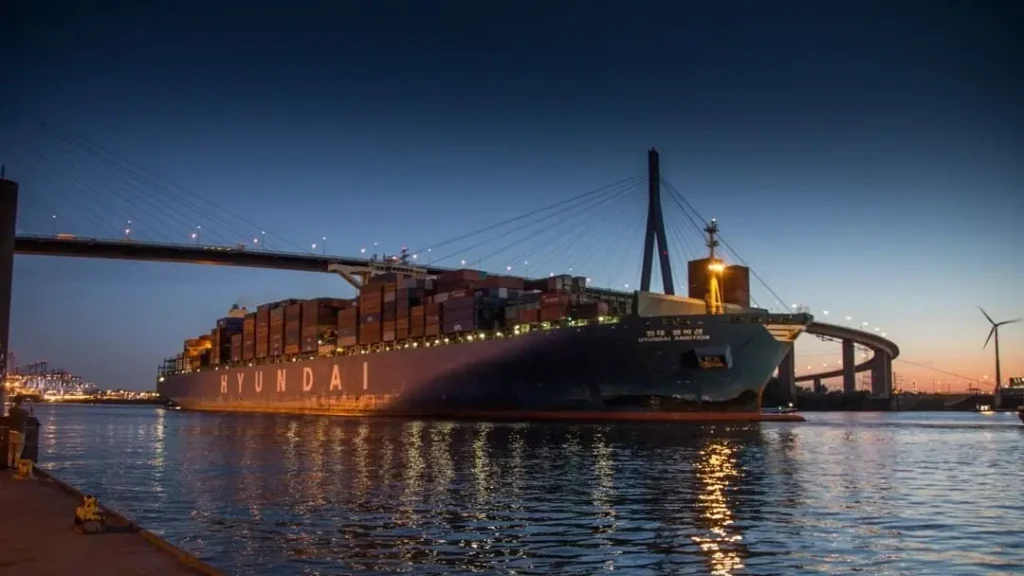
The CV HYUNDAI AMBITION, a New Panamax class cellular container ship built in 2012, has a capacity of 13,082 TEU and operates with a HYUNDAI – B&W 12K98ME-C7 engine. Fuel consumption rates vary by speed: at 12 knots, it consumes 37 MT/day; at 18 knots, 109 MT/day; and at 23 knots, 212 MT/day. Generator fuel usage is around 9 MT/day at sea and 7.5 MT/day in port, with an additional 5 MT/day for boilers. Monthly MGO usage for generator operations is approximately 15 MT.
What is the Average Dry Bulk Carriers Fuel Consumption?
| Bulk Carrier Class | Ship Size | Fuel Consumption per Day (metric tons) |
|---|---|---|
| Small, Mini bulker, General Cargo Ship | 500 – 10,000 dwt | 1-10 mt / day |
| Handysize | 10,000 – 40,000 dwt | 10-30 mt / day |
| Handymax / Supramax / Ultramax | 40,000 – 70,000 dwt | 25-30 mt / day |
| Panamax / New Panamax | 70,000 – 100,000 dwt | 30-35 mt / day |
| Capesize | 100,000 – 200,000 dwt | 30-45 mt / day |
| Chinamax / VLOC | 200,000 – 400,000 dwt | 40-50 mt / day |
For more exact consumption figures and better reference, here are some examples of dry bulk carriers and their consumption.
OSLO WAVE 3
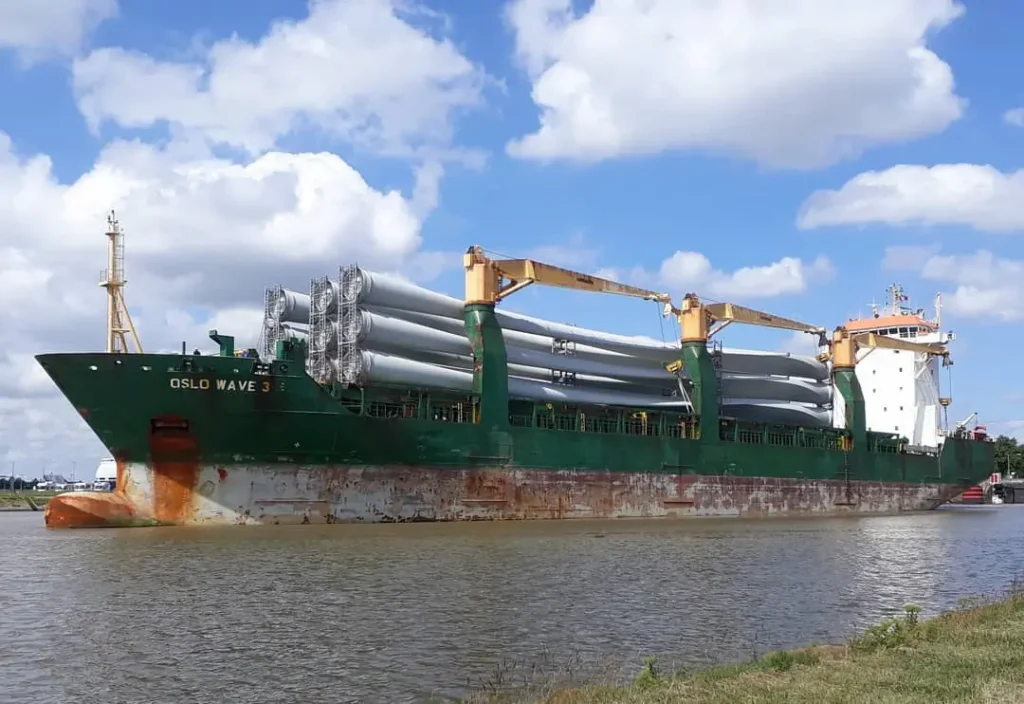
The OSLO WAVE 3, a dry cargo ship built in 2000, has a deadweight tonnage of 17,485 tons and uses a WARTSILLA 8L46B engine. It has a fuel capacity of 1,398.4 m3 for IFO and 217.09 m3 for GO. At full speed (16 knots), it consumes 30 mt/24hrs of IFO 380, and at eco speed (14 knots), it consumes 24 mt/24hrs. MGO consumption is 3.0 mt/24hrs during operations and 1.5 mt/24hrs when idle.
VENEZIA
The MV VENEZIA, an Ultramax class dry bulk cargo ship built in 2017 and flagged in Malta, has a DWT of 60,384 MT. It achieves a speed of 14 knots ballast and 13.5 knots laden, consuming 24 MT IFO ballast and 27 MT IFO laden. In port, consumption is 2.5 MT IFO + 0.1 MT MDO idle and 3.5 MT IFO + 0.1 MT MDO working. It features four 30 MT deck cranes/derricks.
FORTUNE
The MV FORTUNE, a Capesize bulk carrier built in 2016 and flagged in Malta, has a DWT of 182,620 MT. It measures 292 meters in length and 45 meters in beam, with a summer draft of 18.180 meters. Its fuel consumption is 38.1 MT ballast and 41.5 MT laden, with port consumption of about 3.0 MT IFO and 0.2 MT MGO/LSMGO when idle. The ship, without deck cranes/derricks, has a bale capacity of 195.291 M3 and speeds of 14 knots ballast and 13 knots laden.
What is the Average Oil Tanker Fuel Consumption?
| Oil Tanker Ship Type | Ship Size | Fuel Consumption per Day (metric tons) |
|---|---|---|
| Product tanker / General Purpose tanker | 10,000 – 24,999 DWT | 5-30 mt/day |
| Medium Range tanker / Panamax | 25,000–44,999 DWT | 25-40 mt/day |
| LR1 (Long Range 1) / Aframax | 45,000–79,999 DWT | 30-50 mt/day |
| LR2 (Long Range 2) / Suezmax | 80,000–159,999 DWT | 45-60 mt/day |
| VLCC (Very Large Crude Carrier) | 160,000–319,999 DWT | 60-100 mt/day |
| ULCC (Ultra Large Crude Carrier) | 320,000–549,999 DWT | 100-150 mt/day |
Again, please note that these figures are general estimates, and actual values on how much fuel an oil tanker uses can vary based on several factors, including engine type and efficiency, speed, weather conditions, and cargo operations.
MT Elka Glory
MT Elka Glory is an Oil Product / Chemical Tanker with a capacity of 45,000 DWT, designed by Shipyard Brodosplit. The tanker has a length overall of 183.40 m, a breadth moulded of 32.00 m, and a depth moulded of 17.95 m. A Split-MAN-B&W 6S50MC-C diesel engine powers the tanker and has a daily fuel consumption of 33.6 t/day. It can travel up to 20,000 nm and can handle eight grades of cargo simultaneously.
MT Alan
MT Alan is a Suezmax Oil Tanker, and has a deadweight tonnage of 166,300 DWT, with a length overall of 281.20 m, breadth of 48.20 m, and depth of 23.00 m. The vessel has a main engine Split-MAN-B&W 6S70MC-C with a daily fuel oil consumption of 56.7 t/day and a cruising range of 23,000 nm. It has cargo and slop tanks with a capacity of 185,447 m3. Heating of the cargo and operation of the IGS (Inert Gas System) is not included in daily consumption.
What Factors Influence Ship Fuel Consumption?
Several factors influence how much fuel a cargo ship uses, including:
- Ship size and weight
- Engine type and efficiency
- Speed and distance traveled
- Weather conditions and sea state
- Cargo capacity and loading efficiency
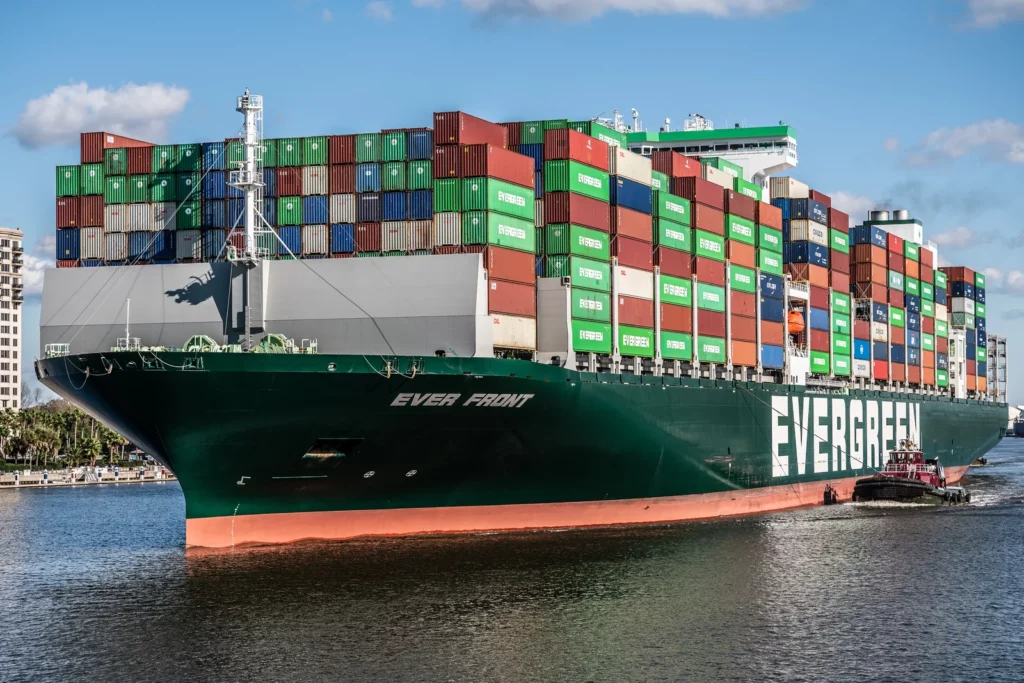
Ship Size and Weight
Ship size and weight are two critical factors that significantly impact a cargo ship’s fuel consumption. Generally, larger and heavier ships require more power to move, leading to higher fuel consumption rates.
For example, a large container ship fuel consumption like the Emma Maersk, which is one of the world’s largest container ships sailing between the busiest and largest ports, can carry up to 15,500 twenty-foot equivalent units (TEUs) and consumes about 250 tons of fuel per day while traveling at a speed of 25 knots (approximately 29 miles per hour).
In contrast, smaller cargo ships, such as Handysize ships that can carry up to 45,000 metric tons of cargo, consume between 20 and 25 tons of fuel per day while traveling at a speed of 12 knots (approximately 13.8 miles per hour).
Similarly, a Panamax-size ship, which is the largest vessel that can pass through the Panama Canal, has a carrying capacity of around 4,500 TEUs and consumes about 80 tons of fuel per day while traveling at a speed of 23 knots (approximately 26.5 miles per hour).
It is worth noting that the fuel consumption rate is not directly proportional to the ship’s size and weight, as other factors, such as engine efficiency and speed, can also influence fuel consumption. Nevertheless, larger and heavier ships tend to have higher fuel consumption rates due to their increased power requirements.
In summary, the size and weight of a cargo ship play a crucial role in determining its fuel consumption rate. While larger and heavier ships tend to consume more fuel, other factors such as engine efficiency, speed, and weather conditions can also impact fuel consumption rates.
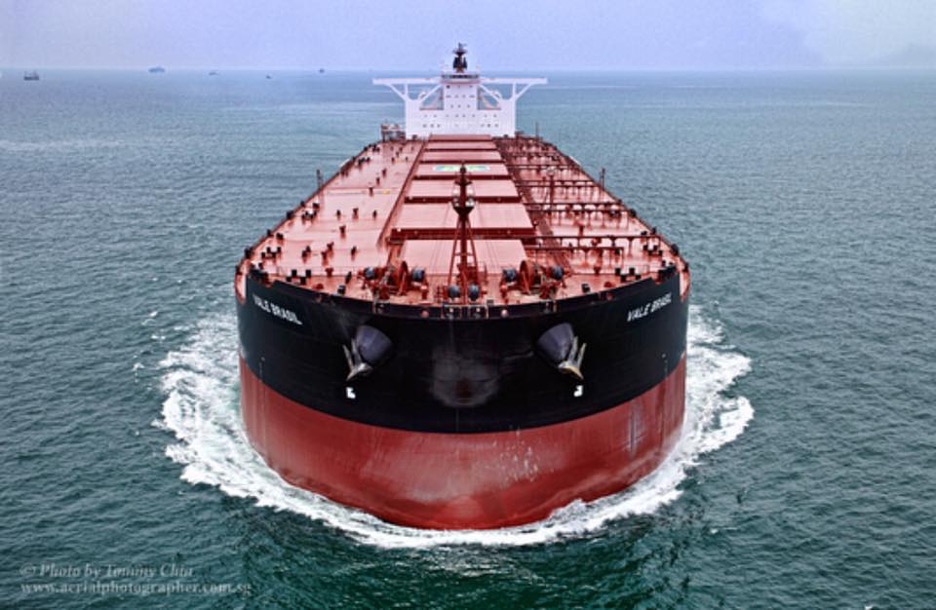
Engine Type and Efficiency
The type and efficiency of the engine also play a crucial role in determining the fuel consumption rate of a cargo ship. Various engine types are used in the shipping industry, including diesel, gas turbine, and steam turbine engines, each with different fuel consumption rates.
Diesel engines are the most commonly used type of engine in the shipping industry. These engines are efficient and reliable, making them a popular choice for many shipowners.
The fuel consumption rate of diesel engines varies depending on the engine’s size and the ship’s speed. A ship with a large diesel engine traveling at high speeds can consume over 100 tons of fuel per day, while a smaller diesel engine on a slower-moving ship may consume just a few tons of fuel per day.
Gas turbine engines are another popular choice for cargo ships, particularly for high-speed vessels. These engines are very efficient and can consume up to 30% less fuel than diesel engines. However, gas turbine engines are more expensive to operate and maintain, making them less popular than diesel engines.
Steam turbine engines were once commonly used in the shipping industry, but they have been largely replaced by diesel engines.
These engines are not as efficient as diesel engines and consume more fuel therefore ships have to carry more fuel. However, steam turbine engines are still used in some specialized cargo ships, such as LNG carriers.
Engine efficiency is another critical factor that can impact fuel consumption rates. Modern engines are designed to be more efficient, which helps to reduce fuel consumption. Efficient engines can also reduce emissions, making them more environmentally friendly.
Shipowners can improve engine efficiency by using the latest technology and regularly maintaining the engine to ensure it is running at peak performance.
The type and efficiency of the engine play a crucial role in determining the fuel consumption rate of a cargo ship.
Diesel engines are the most commonly used engine type, while gas turbine engines are more efficient but less popular due to their higher cost. Steam turbine engines are still used in some specialized cargo ships.
Engine efficiency is also important, and shipowners can improve efficiency by using the latest technology and maintaining the engine regularly.
Ship Fuel Consumption Depending on Speed
The speed at which a cargo ship travels is a significant factor that influences fuel consumption rates. Generally, the faster a ship travels, the more fuel it will consume.
At low speeds, a ship’s fuel consumption rate is relatively low, as the engine requires less power to move the vessel through the water. However, as the ship’s speed increases, the engine must work harder to overcome the increased resistance from the water, resulting in higher fuel consumption rates.
For example, a cargo ship traveling at a speed of 10 knots (approximately 11.5 miles per hour) may consume between 10 and 20 tons of fuel per day, depending on the ship’s size and engine efficiency.
However, if the same ship were to travel at a speed of 20 knots (approximately 23 miles per hour), the fuel consumption rate could increase to between 50 and 100 tons of fuel per day.
It is worth noting that the relationship between ship speed and fuel consumption rate is not always linear. In some cases, increasing a ship’s speed beyond a certain point can actually reduce its fuel consumption rate.
This is because at low speeds, the ship’s hull resistance is high, and the engine must work harder to overcome it. However, as the ship’s speed increases, the hull resistance decreases, and the engine becomes more efficient, resulting in lower fuel consumption rates.
Furthermore, weather conditions can also impact a ship’s fuel consumption rate. For example, traveling against strong currents or in rough seas can increase a ship’s fuel consumption rate, as the engine must work harder to maintain the ship’s speed.
The speed at which a cargo ship travels is a crucial factor that influences fuel consumption rates. Generally, faster speeds result in higher fuel consumption rates, but the relationship between ship speed and fuel consumption rate is not always linear.
Shipowners must consider various factors, such as engine efficiency and weather conditions when determining the optimal speed to minimize fuel consumption and operating costs.
Weather Conditions and Sea State
Weather conditions and sea state are significant factors that can impact the fuel consumption rate of a cargo ship. Adverse weather conditions, such as high winds, heavy seas, and strong currents, can increase a ship’s resistance to movement, leading to higher fuel consumption rates.
Sea state, in particular, can have a significant impact on fuel consumption rates. In calm seas, a ship’s fuel consumption rate is generally lower, as there is less resistance to movement.
However, in rough seas, a ship’s hull encounters greater resistance, and the engine must work harder to maintain the ship’s speed, resulting in higher fuel consumption rates.
For example, a cargo ship traveling at a speed of 15 knots (approximately 17 miles per hour) in calm seas may consume between 30 and 50 tons of fuel per day, depending on the ship’s size and engine efficiency.
However, if the same ship were to encounter rough seas with high waves and strong currents, the fuel consumption rate could increase to between 70 and 100 tons of fuel per day.
It is worth noting that adverse weather conditions can also impact a ship’s safety and affect its ability to carry out its intended voyage. For example, traveling in high winds and heavy seas can increase the risk of damage to the ship’s cargo or even capsizing, which could result in significant financial losses for the shipowner.
Therefore, shipowners must carefully consider weather conditions and sea state when planning their ship’s voyage and determining the optimal speed and route to minimize fuel consumption and ensure the safety of the ship and its crew.
In summary, weather conditions and sea state are significant factors that can impact a cargo ship’s fuel consumption rate. Adverse weather conditions and rough seas can increase resistance to movement and result in higher fuel consumption rates, while calm seas generally result in lower fuel consumption rates. Shipowners must consider these factors when planning their ship’s voyage and determining the optimal speed and route.
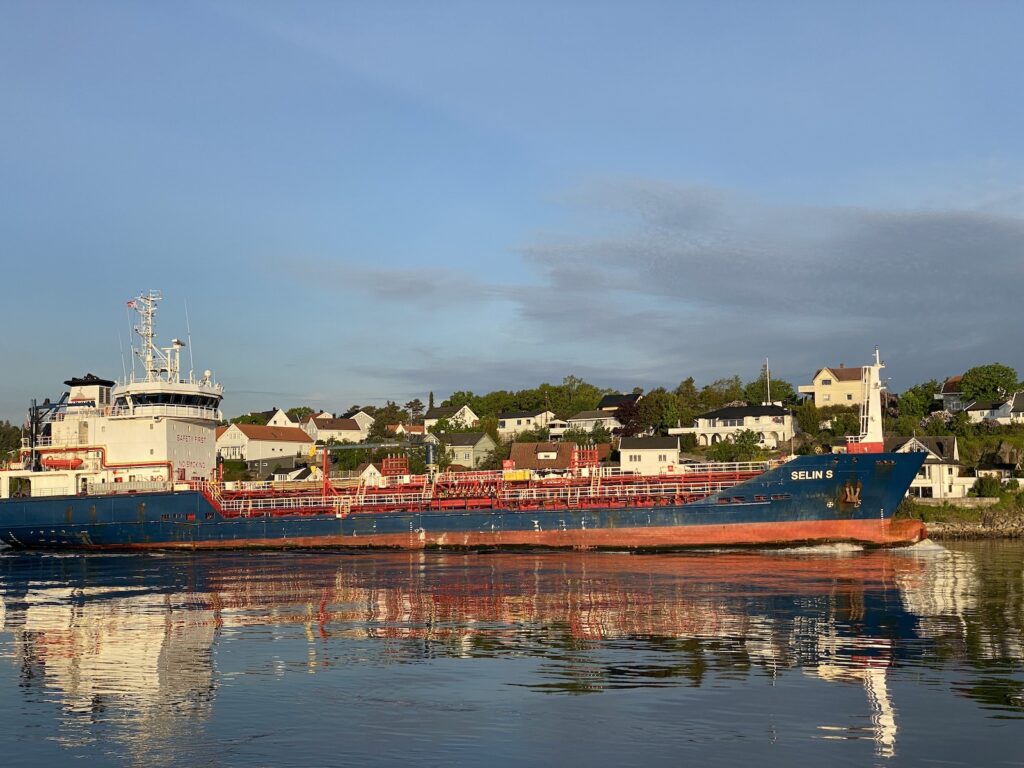
Fuel Consumption during Cargo Operations and Cargo Heating
Cargo operations and cargo heating can also impact a cargo ship’s fuel consumption rate. During cargo operations, the ship’s engines may need to be kept running to power the cargo handling equipment, such as cranes and pumps. This additional workload can lead to increased fuel consumption rates.
Moreover, cargo heating is often necessary for the transportation of certain types of cargo, such as liquid chemicals and oils, to maintain their viscosity and prevent solidification. Heating requires additional energy, and therefore additional fuel consumption.
The amount of fuel consumed during cargo operations and cargo heating depends on various factors, including the size of the ship, the cargo being loaded or unloaded, and the duration of the operation.
For example, a cargo ship with a capacity of 50,000 tons may consume between 2 and 5 tons of fuel per hour during cargo operations. If the cargo operation lasts for 24 hours, the ship may consume between 48 and 120 tons of fuel during this time.
Similarly, cargo heating can also increase fuel consumption rates. The amount of fuel consumed during cargo heating depends on the type and amount of cargo being transported and the temperature required to maintain its viscosity.
For instance, a cargo ship transporting 10,000 tons of heavy fuel oil may consume between 0.5 and 1 ton of fuel per hour to maintain the required heating temperature of 60°C. If the journey lasts for 10 days, the ship may consume between 120 and 240 tons of fuel for cargo heating alone.
Therefore, it is essential for shipowners to carefully plan cargo operations and cargo heating to minimize fuel consumption rates. Using energy-efficient equipment, optimizing cargo handling processes, and maintaining appropriate heating temperatures can help reduce fuel consumption during these operations.
Cargo operations and cargo heating can significantly impact a cargo ship’s fuel consumption rate. Shipowners must consider these factors when planning their voyages and take appropriate measures to optimize fuel consumption and reduce costs.
Environmental Impact of Cargo Ship Fuel Consumption
The environmental impact of cargo ship fuel consumption is a growing concern due to the significant amount of greenhouse gas emissions associated with the shipping industry. Cargo ships primarily use heavy fuel oil (HFO), which is a highly polluting fuel with high levels of sulfur, nitrogen, and particulate matter emissions.
These emissions contribute to air pollution and can have negative effects on human health and the environment, including acid rain, smog, and respiratory problems. In addition to air pollution, cargo ship fuel consumption also contributes to climate change, with carbon dioxide (CO2) being the most significant greenhouse gas emitted by the shipping industry.
According to the International Maritime Organization (IMO), the shipping industry accounts for about 2.5% of global greenhouse gas emissions, and this is expected to increase in the coming years as global trade continues to grow.
To address the environmental impact of cargo ship fuel consumption, various initiatives, and regulations have been introduced. The IMO has implemented several measures, including the adoption of the International Convention for the Prevention of Pollution from Ships (MARPOL) and the introduction of energy efficiency standards for new ships.
Additionally, the IMO has set a target to reduce the shipping industry’s greenhouse gas emissions by at least 50% by 2050 compared to 2008 levels. To achieve this goal, the maritime industry is exploring alternative fuels and propulsion technologies, such as liquefied natural gas (LNG), biofuels, and electric propulsion systems.
Furthermore, cargo ship operators can take measures to reduce their environmental impact by optimizing their operations, such as reducing speed, implementing fuel-efficient practices, and maintaining their vessels to ensure they are operating at peak efficiency.
The environmental impact of cargo ship fuel consumption is significant, and measures must be taken to mitigate it. The shipping industry must continue to adopt cleaner fuels and propulsion technologies and optimize their operations to reduce greenhouse gas emissions and improve air quality. By taking these measures, the industry can become more sustainable and environmentally responsible while meeting the growing demand for global trade.
Conclusion
Cargo ships play a crucial role in global trade, but their fuel consumption has a significant impact on the environment. Understanding the factors that influence fuel consumption is crucial to developing strategies for reducing emissions and promoting sustainability in the shipping industry.
- Types of Gas Carriers as per IGC Code – April 22, 2025
- Wind-Assisted Propulsion Systems (WAPS): A Game Changer for Maritime Decarbonization – February 6, 2025
- 10 Boat Salvage Yards in California – January 25, 2025



